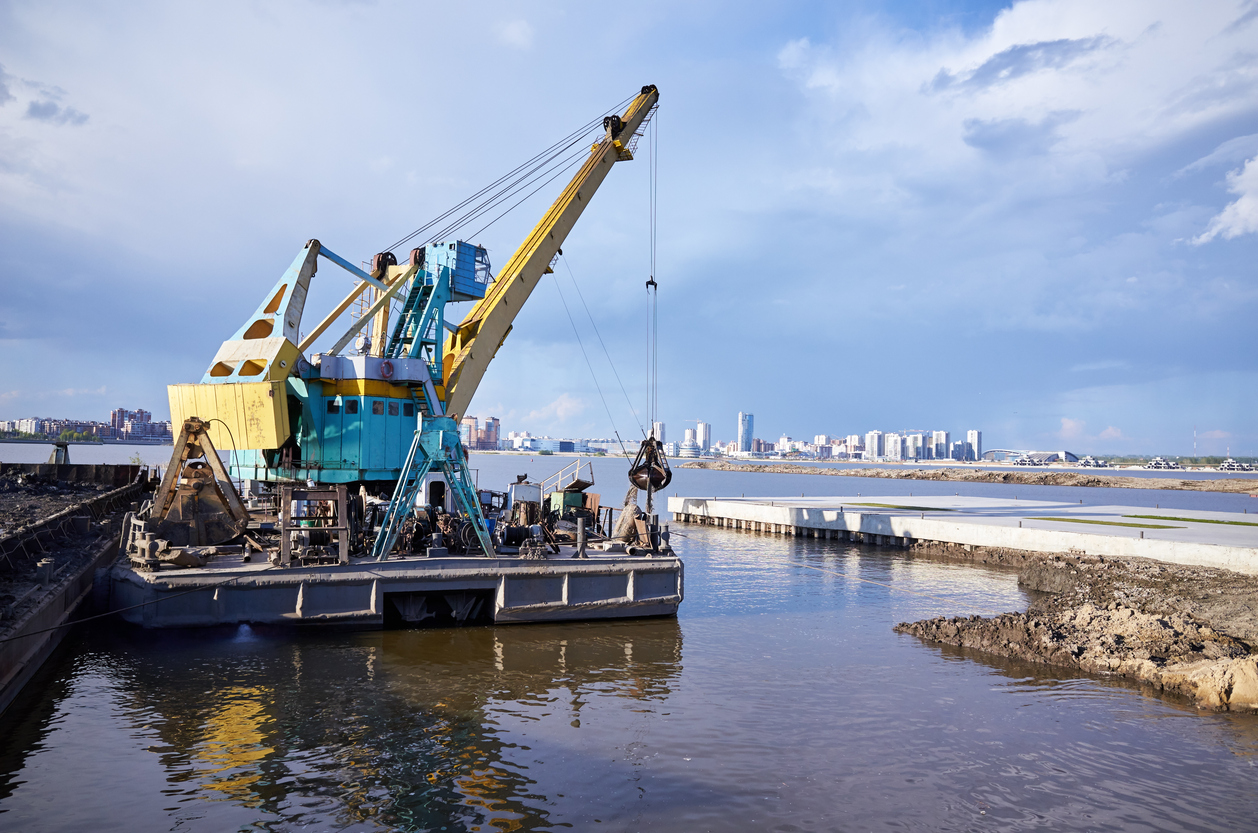
How Can Advancements in Technology Affect Marine Dredging Insurance?
October 9, 2025
Technology is rapidly transforming everything, even marine dredging insurance.
That’s due to some head-spinning changes over the years in marine dredging projects. From autonomous equipment and real-time monitoring systems to AI-powered analytics that optimize operations, marine dredging has gone high-tech. If dredging was drudgery, it is no longer.
But as dredging contractors adopt these innovations, the insurance industry has needed to keep up, shifting from traditional underwriting practices to data-driven models. For insurance agents who want to stay current and properly serve their clients, understanding these changes has become essential.
So, how does technology affect marine insurance? In two ways: technology allows marine dredgers to better manage their risk, but at the same time, these tech improvements are a serious investment. Fortunately, in a number of ways, marine dredging insurance is evolving to address both dimensions of this transformation.
Enhanced Risk Assessment and Management
Marine dredging insurance has been undergoing a transformation in recent years. Here are just some of the advances in the insurer’s toolbox.
Artificial Intelligence and Predictive Modeling
Both enable insurers to develop smarter premium structures based on historical data, project characteristics, and real-time performance metrics. AI’s growing role in the insurance industry allows underwriters to assess risk with unprecedented precision, potentially reducing costs for dredging contractors who demonstrate strong safety records and operational excellence.
Internet of Things (IoT) Devices and Telematics
Both are creating real-time risk profiles by monitoring equipment performance, environmental conditions, and operational parameters throughout dredging projects. These connected systems provide insurers with continuous data streams that reflect actual exposure levels rather than estimates based on past industry averages.
Drones and Robotics
They can conduct advanced surveys that identify potential hazards before they escalate into costly incidents. Remote sensing technology detects underwater obstacles, structural weaknesses, and environmental concerns that traditional inspection methods might miss. Sensor technology catches maintenance issues early, preventing equipment failures that could lead to project delays, environmental damage, or worker injuries.
These tools also optimize routes and operations for safety and efficiency, reducing the likelihood of accidents and claims. Real-time monitoring helps dredging contractors meet environmental standards by tracking sediment dispersion, water quality, and compliance with regulatory requirements, addressing concerns about microplastic liabilities and other environmental exposures.
Streamlined Claims and Policy Administration
This is another area where technology has made a significant impact on marine insurance.
Automation accelerates claims settlements through AI tools that speed up documentation review and damage assessment. When dredging contractors experience equipment breakdowns or project interruptions, faster claims processing helps them recover from disruptions more quickly and return to productive operations.
Digital platforms have improved documentation accuracy by reducing errors in policy and claims records. Cloud-based systems give agents clearer, more accessible information, while maritime digitalization strategies promoted by the International Maritime Organization encourage standardized data practices across the industry.
New Risks and Coverage Challenges
The high-tech world of marine dredging has meant a lot of exciting opportunities for the industry, but it hasn’t been all sunsets and seashells.
Connected dredging operations face increasingly sophisticated cyber threats as equipment, control systems, and data networks become potential targets for attacks. Ransomware incidents or system breaches can halt operations, compromise sensitive project data, or create safety hazards. All of those issues can require specialized cyber coverage that traditional dredging insurance may not provide.
AI, while a godsend in many ways, isn’t perfect. AI-generated errors can present liability gaps when automated systems make flawed decisions about operations, navigation, or environmental compliance. Determining responsibility for losses caused by algorithmic failures creates complex coverage questions that insurers and contractors must address together.
The challenges continue: High-tech equipment like drones, remotely operated vehicles, and advanced sensors represents significant capital investment that requires appropriate coverage. These tools face unique risks from technical failures, environmental damage, and theft, necessitating careful policy review to ensure adequate protection. Marine contractors insurance for dock and dredging projects must account for both traditional equipment and emerging technologies.
Sink or Swim
Technology is reshaping both dredging operations and the insurance solutions that protect them. Every day, advancements bring powerful new protections through better risk assessment, proactive loss prevention, and streamlined claims handling, while also introducing vulnerabilities that demand specialized coverage. Insurance agents who understand these dual impacts and can identify gaps in coverage will far better serve their dredging clients.
Contact Merrimac Marine Insurance to learn how their specialized marine dredging insurance solutions can help protect your clients against both traditional and emerging risks.
About Merrimac Marine Insurance
At Merrimac Marine, we are dedicated to providing insurance for the marine industry to protect your clients’ businesses and assets. For more information about our products and programs, contact our specialists today at (800) 681-1998.
